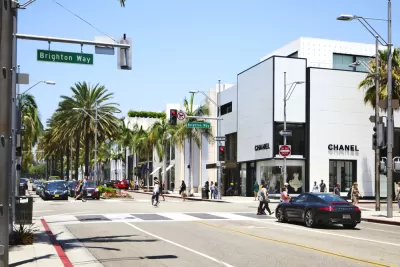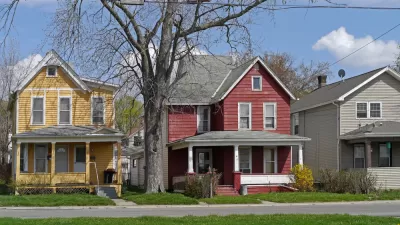Recent studies have called into question the predominant narratives on gentrification. A more precise definition of the term as it works in the United States is required.

Henry Grabar surveys the latest evidence of gentrification and displacement as trends in neighborhoods around the country and notes two dynamics:
All three of those reports bolster the conventional narrative about urban change in America, which is that urban neighborhoods are getting whiter and wealthier, sometimes at the expense of longtime residents. Yet all three emphasize that, statistically, those changes run very much against larger currents of metropolitan change. The most likely story, for most Americans in most cities, is that their neighborhood is getting poorer and less white. There is no city in the country where low-income people are more likely to live in a neighborhood that’s getting richer than one that’s getting poorer.
Grabar is basing that summary on three recently published studies of demographic and neighborhood changes: one by the New York Times, one by the National Community Reinvestment Coalition, and one by the Institute on Metropolitan Opportunity at the University of Minnesota Law School.
The three new studies emphasize the need for us to keep two ideas in our heads at once: Gentrification is real and is sometimes accompanied by displacement. But most neighborhoods are either rich and getting richer, or they are just getting poorer (mostly the second).
Digging into each of the studies for specific geographic examples, and using Beverly Hills as a star example, Grabar builds the case that too many cities claim the specter of gentrification, and it is a major obstacle to land use reforms such as SB 50 in California.
FULL STORY: Gentrification Got Gentrified

Alabama: Trump Terminates Settlements for Black Communities Harmed By Raw Sewage
Trump deemed the landmark civil rights agreement “illegal DEI and environmental justice policy.”

Study: Maui’s Plan to Convert Vacation Rentals to Long-Term Housing Could Cause Nearly $1 Billion Economic Loss
The plan would reduce visitor accommodation by 25% resulting in 1,900 jobs lost.

Planetizen Federal Action Tracker
A weekly monitor of how Trump’s orders and actions are impacting planners and planning in America.

This Toronto Suburb Has More Bus Riders Than Columbus, Ohio
Brampton, Ontario used gradual improvements in service to prove that if you build it, they will ride.

Paris Bike Boom Leads to Steep Drop in Air Pollution
The French city’s air quality has improved dramatically in the past 20 years, coinciding with a growth in cycling.

Why Housing Costs More to Build in California Than in Texas
Hard costs like labor and materials combined with ‘soft’ costs such as permitting make building in the San Francisco Bay Area almost three times as costly as in Texas cities.
Urban Design for Planners 1: Software Tools
This six-course series explores essential urban design concepts using open source software and equips planners with the tools they need to participate fully in the urban design process.
Planning for Universal Design
Learn the tools for implementing Universal Design in planning regulations.
Smith Gee Studio
Alamo Area Metropolitan Planning Organization
City of Santa Clarita
Institute for Housing and Urban Development Studies (IHS)
City of Grandview
Harvard GSD Executive Education
Toledo-Lucas County Plan Commissions
Salt Lake City
NYU Wagner Graduate School of Public Service





























